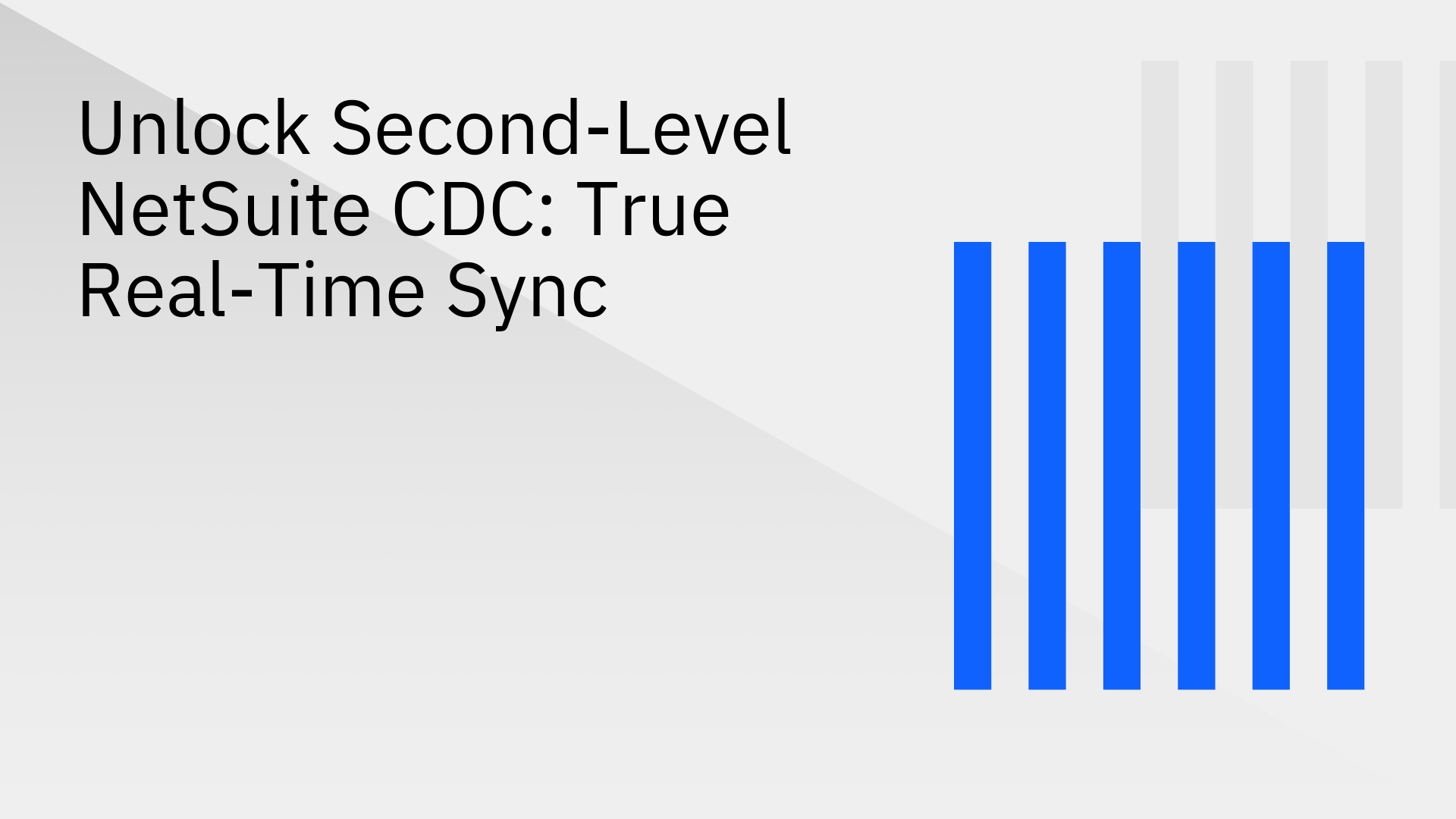
In today's hyper-competitive business environment, real-time data is the lifeblood of your operations. It powers critical workflows, enables instant analytics, and drives responsive applications that give you an edge.
To achieve this, engineering teams rely on Change Data Capture (CDC), the gold standard for real-time data integration that captures every change as it happens. But while CDC is powerful, achieving true, low-latency NetSuite real time CDC is an exceptionally difficult engineering feat due to the platform's inherent limitations.
Most companies quickly discover that building operational pipelines to react instantly to NetSuite events is a losing battle. This struggle isn't from a lack of effort; it stems from severe technical constraints baked into NetSuite’s architecture, which simply wasn't designed for the high-throughput, low-latency demands of modern data stacks.
The path to real-time NetSuite data is blocked by significant bottlenecks that render traditional data extraction methods ineffective for real-time needs.
These limitations make "second-level CDC" virtually impossible to achieve with homegrown solutions or generic integration tools. Second-level CDC is the ability to detect changes not just in a primary record (like a sales order) but also in all its related objects (like line items, customer details, and shipping status) in real time.
With the large number of objects teams need to monitor, combined with NetSuite's API limits, tracking these cascading changes reliably and instantly is an immense engineering challenge. This is precisely why most custom scripts or generic platforms fail, leading to data delays, sync failures, and brittle pipelines that demand constant maintenance. To move forward, you need to go Beyond ODBC: Why Stacksync is Revolutionizing NetSuite Data Integration.
At Stacksync, we’ve invested the intensive engineering effort required to build a system that masterfully overcomes NetSuite's stringent limits. We deliver what others can't: a purpose-built platform for reliable, immediate data movement that unlocks true NetSuite real time CDC.
Stacksync utilizes a proprietary, event-driven architecture engineered specifically to bypass NetSuite's bottlenecks and deliver second-level data changes with millisecond latency. Our platform intelligently navigates NetSuite’s constraints through key innovations:
This specialized architecture is the powerhouse behind our Netsuite two-way sync integration and workflow automation, delivering a level of performance and reliability that generic tools simply cannot match.
With Stacksync, you can finally build the resilient, real-time applications and workflows your business has been waiting for.
While other tools from providers like Striim and Estuary offer NetSuite connectors, they are often designed for one-way data replication into an analytics environment.
This is useful for reporting but falls short for operational use cases that demand immediate, reliable, and bi-directional data flow.
Their architectures are not purpose-built to handle the immense complexity of second-level CDC at scale, the true challenge with NetSuite where a single change must instantly and correctly propagate across numerous related objects.
This is where Stacksync delivers an unparalleled advantage. Our platform is engineered from the ground up for the reliability and two-way consistency that enterprise-grade operational pipelines demand. We provide advanced issue management, guaranteed data integrity, and true bi-directional synchronization to ensure your most critical business processes run flawlessly.
Achieving real-time, second-level CDC from NetSuite is a formidable engineering hurdle that prevents most businesses from leveraging their ERP data effectively. Brittle, custom-coded pipelines and generic integration tools that buckle under NetSuite's unique constraints lead to costly data delays and operational inefficiencies.
Stacksync has solved this problem. Our robust platform delivers true real-time data synchronization, freeing your engineering teams from building and maintaining fragile integrations so they can focus on innovation. It’s time to unlock the full potential of your NetSuite data.
Ready to power any application, workflow, or analytics dashboard with confidence? Explore the Stacksync platform or schedule a demo with a solutions architect today.